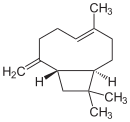acespicoli
Well-known member
Antidote Man
 a single indica male clone...
a single indica male clone...Any post that discusses the history of Romulan and does not mention Vic High doesn't really understand who standardized and popularized it via the BCGA.View attachment 18929944
View attachment 18929945
Eugene Oregona single indica male clone...
View attachment 18929947
View attachment 18929954
View attachment 18929965
RedSky
Romulan Origins
Romulan was created by a guy named Romulan Joe once known as Mendocino Joe who was one of the founders of the Trinity grow scene. Romulan is a mostly afghani hybrid not related to Sk#1. It is very popular with the marijuana medical scene because of it's potency for treating chronic pain. There are a few banks that carry the strain and it's hybrids. Federation had the original clone, and 97% pure seed form. Next Generation has many of Federation's strains including Romulan. Reeferman has Romulan and it's hybrids. Marc Emery used to have a Romulan x White Widow cross that was very popular. I have seen pics of this Rom/WW hybrid, and they are truly amazing with almost purple look, super thick buds, and with crystals all over the entire plant! Another hybrids that was popular was Romberry (Romulan x BlueBerry)with it's exotic taste and awesome purple colors! Subcool seeds has a C99 x Romulan cross called Space Queen.
In the old days whenever someone mentioned Romulan, the talk of California Blue Indicas comes up. I am not sure what Blue Indica means, but they get mentioned. I know Romulan is mostly of Afghan origin, but I would like to know what the other genetics of the plant are. Maybe there is a little Paki/Hindu Kush or Lebanese hashplant mixed in. General concensus says that it is not entirely Afghan, and that it has more sativa in it than a landrace Afghan or Hindu Kush. I am thinking that it is slightly under 15%-10% sativa. Since it has a lot of purple coloring, it may have a little Colombian Green, Red, or Black in it. There is talk of it maybe having a very little amount of mexican genetics in it as well, maybe Oaxacan. People tried to grow these late flowering equatorial sativas outdoors up north with little sucess until Afghan seeds arrived. That's my specualtion. It may have a little haze crossed in, but I think that Northern Lights has the claim on the multiple Afghan x (Afghan x Haze) cross.
Federation acquired a strain from Romulan Joe (A Vietnam Vet/East Bay Biker) from California and grew it on Vancouver island. It was given to them in clone form. I guess that Federation crossed it with White Rhino to get seeds. They backcrossed it 11 times backwards to the original clone. They favored backcrossed plants that were the largest & most robust while still finishing within 8 weeks flowering time. Federation's seeds are 97% like the orig clone. Now it has been inbred ever since, and it is good breeding material to cross other plants with.
The overall structure of the plant is short and stocky. They said it can get a very branchy compared to other afghan/indicas, and it isn't the best choice for SOG. The color of the buds and leaves are very dark green with a thick structure. Leaves are wide. The stems on the plant turn purple. I'd imagine that maybe other parts of plant will start to turn purp near the end of harvest time. The plant is pretty frosted in that some stems have crystals on them. The yields mentioned are 30g-60g per plant indoors, up to 250g outside. Since it is almost all indica and an IBL, it doesn't have hybrid vigor and the sativa stretch in flowering that other strains tend to have. I have seen growers get a little more yields out of the plant. Federation says Rom can foster mold near harvest time if you are in a humid environment.
Federation claims Romulan as it's strongest strain potency wise. It was nicknamed Romulan because "the high can put a dent in your head". Most people claim that the high is a little more clearer thinking than most indicas, but still strong enough to Kick Your Ass. The smells are pretty strong ranging from a pungent piney to an acrid fruity/pepper smell.
Peace
| Compound | % of total |
|---|---|

Myrcene | 29.4–65.8 |

α-Pinene | 2.3–31.0 |

β-Pinene | 0.9–7.8 |

delta-3-Carene | trace–3.5 |

Limonene | 0.2–6.9 |

β-phellandrene | 0.2–0.6 |

cis-Ocimene | trace–0.3 |

trans-Ocimene | 0.3–10.2 |

α-Terpinolene | trace–23.8 |

α-Bergamotene | trace–0.8 |

trans-Caryophyllene | 3.8–37.5 |

α-Humulene | 0.7–7.4 |

β-Farnesene | trace–1.4 |
| β-Selinene | trace–0.5 |
| Selina-3,7(11)-diene | trace–0.7 |
| Caryophyllene oxide | trace–11.3 |
| Total monoterpenes | 47.9–92.1 |
| Total sesquiterpenes | 4.0–47.5 |



Waiting on more seedsAny MLI Ortega seeds available? I just finished crossing a skunky male Afghani into Garlic bud. Plants smell killer. I have 2 phenotype female Garlic bud breeders.
 will keep it in mind
will keep it in mindGrowing some white label Super Skunk, were gifted to me a few years ago, but no idea where from or how old they are (got them in 2017 I think). Only know they yielded well, and the grower was a bit of a noob.View attachment 18941826
View attachment 18941828
Strain: Critical Mass
Breeder: Mr Nice Seedbank
Location: Outdoor
Photo made at: Anfang October
Upload date: 20.10.2011
Picture from: euskalbud
Anyone working these types big bud and critical, maybe dinafems ?
